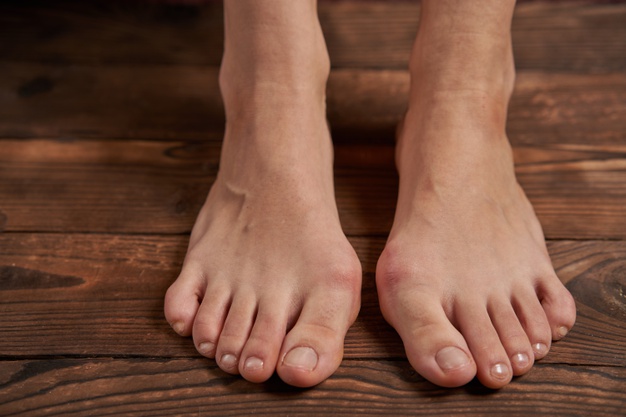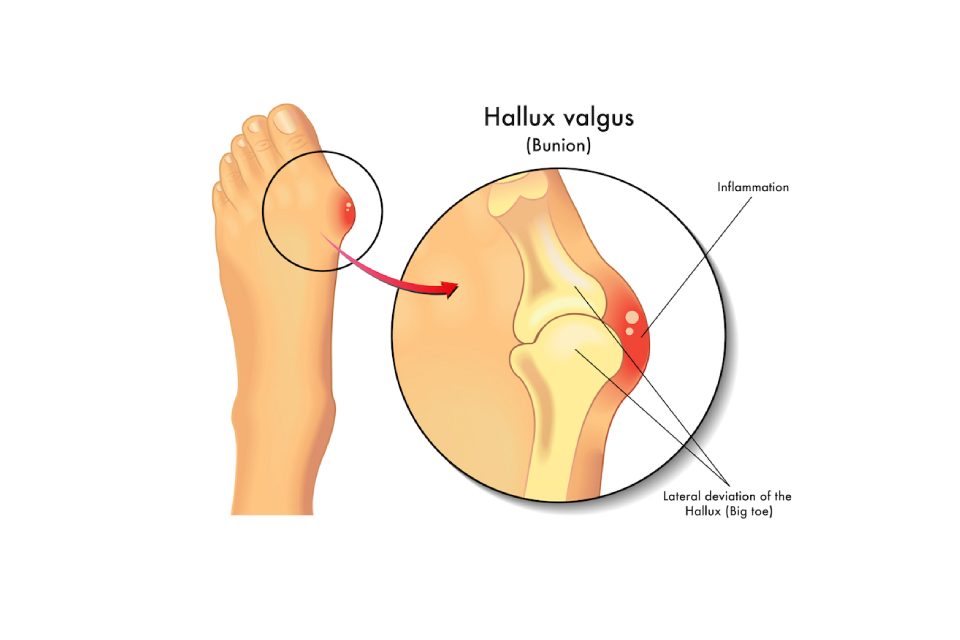- Have any questions?
- +91-9811443717
- info@dranujchawla.com
Bunion – what to expect from surgery?

5 Foot Problems That Can Be Serious
October 20, 2020
Know everything about Morton’s Neuroma
November 10, 2020Bunion – what to expect from surgery?

A bunion is a foot problem in which the big toe deviates towards the lesser toes and a bump develops at the base of the big toe. Technically this disease is called hallux valgus and it affects not just the big toe but may cause a deformity in the lesser toes as well. A bunion is the commonest forefoot problem and it is estimated that 1 in 3 people over the age of 65 develop a bunion at some point in their lifetime.
In most cases, the deformity will be mild and may cause either no or minimal symptoms. But in some cases, it may be associated with lesser toe deformities like hammer toe or cross over the toe and can be debilitating to the patient.
There are numerous predisposing factors associated with the development of a bunion. In many patients, especially younger ones; positive family history is seen. Other conditions like connective tissue disorders, rheumatoid arthritis, and gout, conditions with muscle imbalance like cerebral palsy or tight calf muscles may also increase the chances of a bunion. The one modifiable factor associated with the bunion, especially in women is wearing shoes with a narrow toe box like stellarators.
Bunion surgery- is it the only option?
In patients with a mild deformity or those with minimal symptoms, non-operative measures can be tried. Common options include using night splints, bunion pads, customized insoles, and physiotherapy exercises to stretch the calf muscles or strengthen the muscles in the foot. Nevertheless, it stands true that none of the non-operative treatment measures can correct the deformity that has already formed. If the problem is intense and can’t be treated through a non-surgical method, then surgery is the only way to treat it.
Know all types before going for surgery
-
Bunionectomy for mild deformities
This surgery involves shaving off the bump from the big toe externally and gently rearranging the ligaments and tendons to support the toe joint better. In most of the cases, it is done as an adjunct to bunion osteotomy and is rarely done as an isolated procedure.
-
Bunion osteotomy to prevent the deformity
This surgical option is the most commonly performed surgery to fix the bunion. In this the one or two bones are cut, realigned and then fixed with screws or plates for additional stability and prevention of recurrence. This surgery can be performed either by a large incision or a small cut, called Minimally Invasive Surgery. The type of surgery depends upon the severity of the deformity and the type of disease.
-
Bunion arthrodesis to treat severe foot problem
If the deformity is very severe or these is associated arthritis in the joint, doing an osteotomy may not solve the problem in totality and hence, fusion surgery in which the bones of the joint are joined together and fixed with plates and screws is performed. While this surgery may be thought of as a major procedure, it leads to a very stable and painless big toe and is a very successful procedure.
Surgery Day- What to expect?
The duration of surgery is completely dependent on the complexity of the case, and you should discuss such detail before the day of operation. Before surgery, please make sure that the nails of the toes are trimmed and the feet are scrubbed with chlorhexidine or any antiseptic soap the night before the surgery. The surgery is typically a day surgery in which you are admitted on the morning of surgery and can go home the same evening or the very next day. After the surgery is finished the doctor may give an ankle or foot block that will help in pain relief in the post-operative period. Before discharge, the doctor or physiotherapist will make you walk with the help of a special post-operative shoe that has to be worn for few weeks.
What to expect after discharge from bunion surgery?
After discharge, you should have someone to take you home and help with the daily chores for some weeks. It is advisable to keep your foot elevated for the first 2 weeks to reduce any swelling and hence help in recovery. Post-surgery, it may take some time for your foot to completely recover, and this time duration depends on the type of surgery. For instance, a minor bunionectomy takes hardly a few days, while arthrodesis may take a few months for rehabilitation. You may be advised to take some sessions of physical therapy (depending on the surgery type), wear some orthotic device, or a special type of footwear. Also, you have to meet your surgeon for a follow-up at regular intervals.
After the complete rehabilitation, your foot will be pain free, and with regular exercise, you will be able to regain the mobility of the foot. So, in the end, you will be smiling again and going after your dreams with hope and optimism.
If you are looking for an experienced foot and ankle specialist in Gurgaon to cure your all foot problems, then you can simply contact Dr. Anuj Chawla. He has 10+ years of experience in foot pain treatment and has helped many people to get back on their feet. Before recommending any treatment, he thoroughly analyzes the situation through diagnostic reports. You can book an appointment with him, and hopefully, he can help you in getting rid of the foot pain

